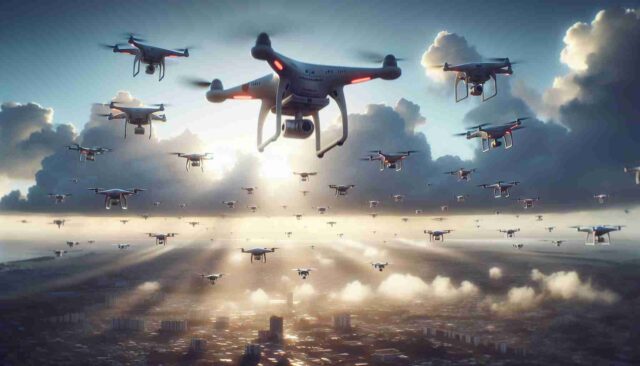As Mauritius twinkles on the global map, a tiny speck cast off the southeast coast of Africa, an era of flight comes alive not with the screeches of seagulls, but with the buzzing of drones. These high-flying gadgets, once mere playthings, have now swooped into the economic and recreational heart of this island nation, prompting the government to unfurl a tapestry of rules—a regulatory dance of drones over Mauritius’s turquoise waters and emerald landscapes.
Under the watchful eye of the Civil Aviation Authority of Mauritius (CAA), drones pirouette and plie, performing their aerial ballet within a framework designed to nurture both innovation and safety. Picture this: A fleet of drones, each adorned with a unique registration number, an electronic badge of honor bestowed upon them as they register into the formal ranks of Mauritius’s airspace users.
But this waltz in the skies is not freeform. The pilots, once dreamers with their heads in the clouds, must now ground themselves in the letter of the law. And what, you ask, does this dossier demand? A medley of prerequisites: An age of majority, a pilot’s wing, or an official UAV operator’s license—the must-have accessory for any drone enthusiast.
A tapestry of limitations further curtails their flight of fancy. The CAA, akin to a stern maestro, delineates the do’s and don’ts: Fly by day, they decree, when the sun bathes the island in light and the weather sings a calm tune. Tread not near the hallowed grounds of airports and military bases, where silence and respect are due. Keep your drones within a visual embrace, they command, and stray not closer than 50 meters from mortals, their creations, or their vessels.
Yet, there is more to this intricate minuet. In the domain of Mauritian drones, safety is the prime choreography. Pre-flight checks, ensuring drones’ fitness to take to the heavens, and the possession of a civil liability insurance are merely foundational steps in the intricate dance.
Above all, there is a zone, a canvas in the sky where drones are forbidden to tread—a no-fly zone which blankets the island, a place where only birds may dare to wander unencumbered.
Bear in mind, the stakes are high—break these rules, and one might face the music with fines, suspended permits, or even a grim tango with criminal prosecution. But fret not, for the drone operators of Mauritius, cognizant of the dance they must perform, have embraced these regulations, acknowledging that the safety of their performance secures not only their own passion but also the common good.
An astute reader may ponder the gravitas of the CAA’s mandate. The authority sits at the confluence of safety and prosperity, guiding unmanned aerial vessels away from lucrative commercial exploits and potentially perilous payloads. Operators thus engage with the skies not for coin but for the pure joy it brings.
